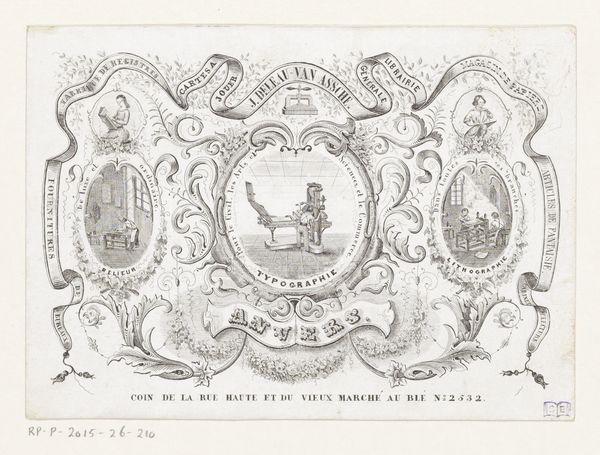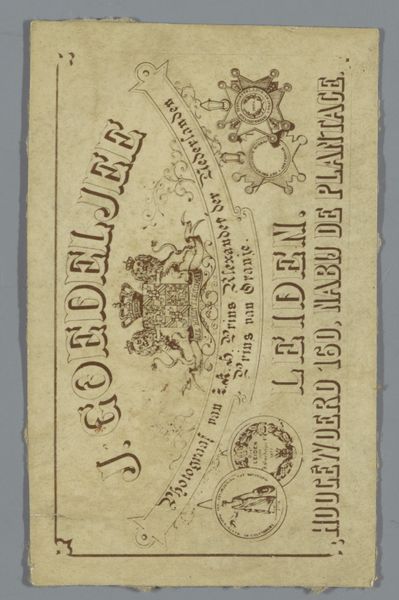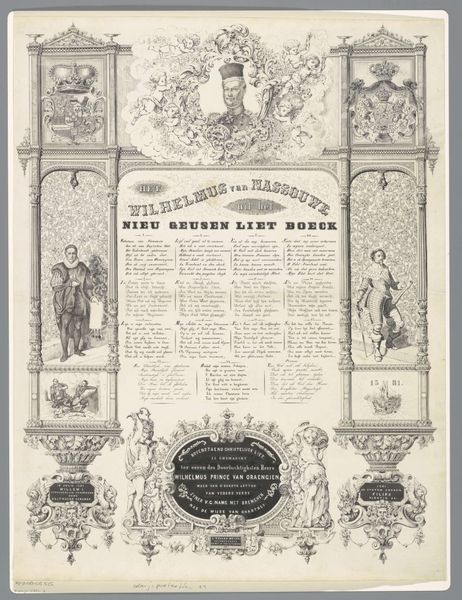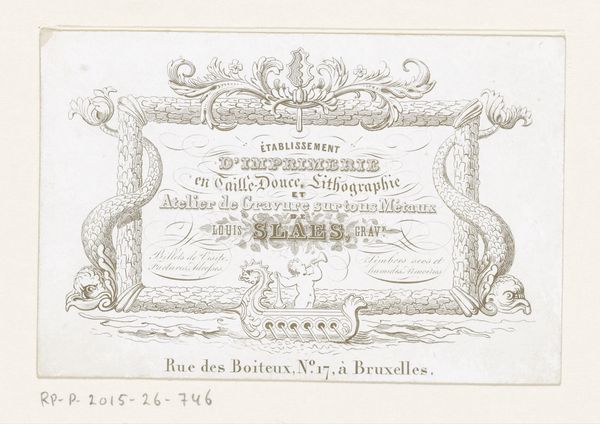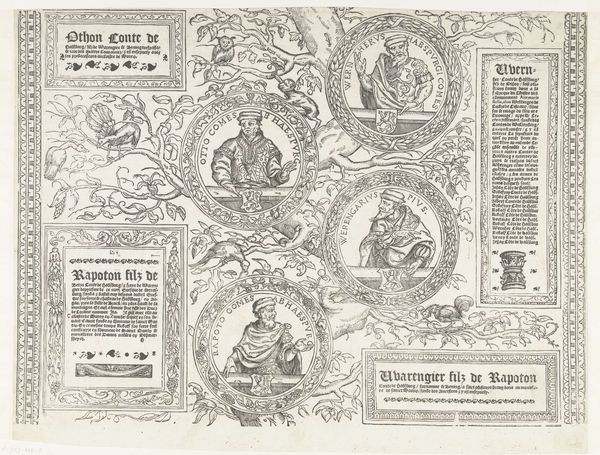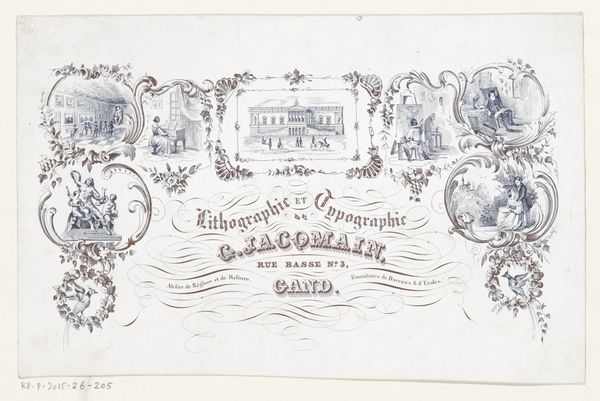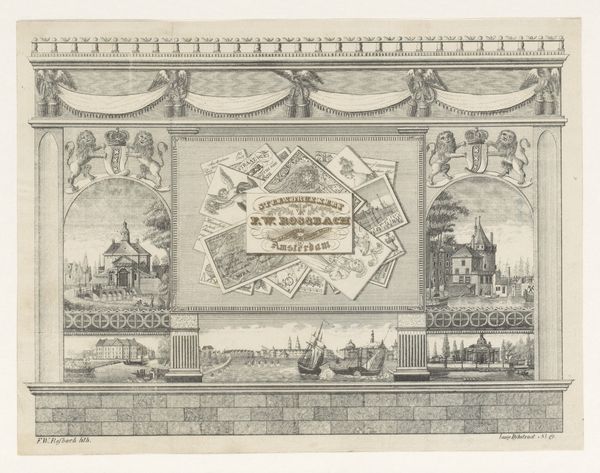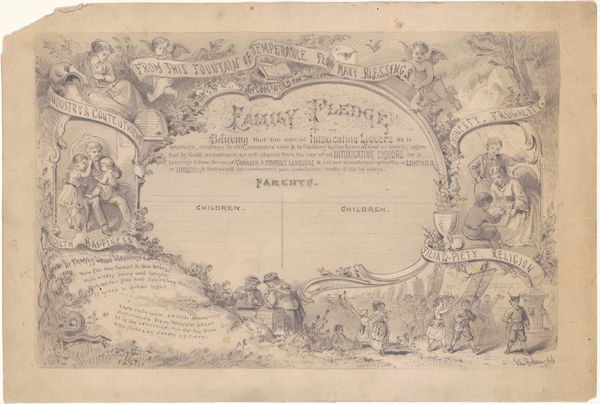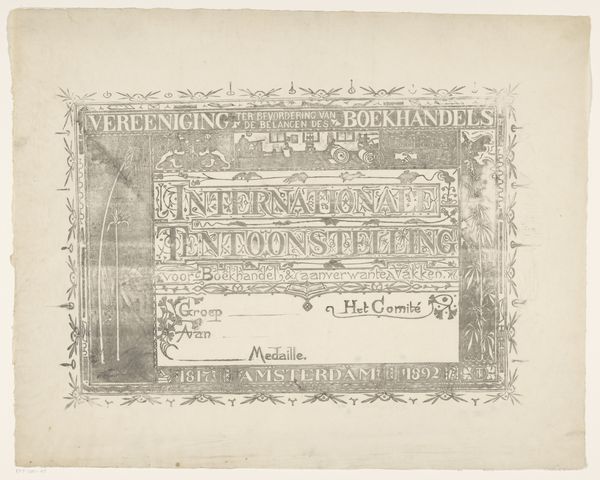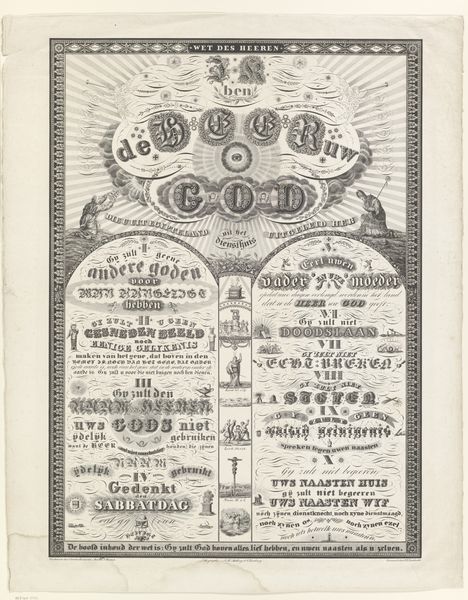
drawing, print, poster
#
drawing
#
comic strip sketch
#
ship
# print
#
pen sketch
#
old engraving style
#
personal sketchbook
#
sketchwork
#
pen-ink sketch
#
horse
#
pen work
#
sketchbook drawing
#
storyboard and sketchbook work
#
poster
#
sketchbook art
Dimensions: Overall: 16 1/8 × 22 3/4 in. (41 × 57.8 cm)
Copyright: Public Domain
Curator: What immediately strikes me about this poster is how visually dense it is, a kind of controlled chaos held within an elegant frame. Editor: It really is like peering into a collective visual memory! This is a promotional poster for Raynaud Frères, dating back to 1841. Raynaud Frères were a lithographic printing company based in Toulouse, France. What we're looking at now is housed in the Metropolitan Museum of Art. Curator: Yes, that’s interesting context, considering its very immediate graphic quality. Lithography was quite new then, wasn’t it? Look at the framing motifs—ships at sea, idyllic landscapes, angelic figures—juxtaposed against battle scenes... there’s a deliberate contrasting of tranquility and turbulence. Editor: Absolutely. Lithography allowed for detailed replication, crucial for businesses. But consider what they choose to replicate here; the battles point toward national pride, of course. The other smaller scenes seem curated to create a particular tone, even brand identity! There’s that duality again – both civic responsibility *and* intimate engagement with its would-be customers. Curator: You know, I'm seeing that repetition more clearly now. Those recurring images of ships feel almost allegorical, journeys into the unknown perhaps representing the innovative spirit of the printing business itself? What cultural meanings can be seen here today that Raynaud Frères’ audience wouldn't? Editor: A key historical point to keep in mind is that these posters acted as public announcements, so the messages encoded are definitely strategic. Take the idealized neoclassical scenes, which were still deeply influential, projecting ideas of civility and artistic achievement to potential patrons. The politics of images, even in commerce. Curator: What really comes to mind now is its impact today. Beyond its advertising function, "Poster for Raynaud Frères" becomes a testament to human ingenuity and creativity – the act of imprinting not only images, but ideas across time. Editor: And also how something as straightforward as advertising can be understood as cultural storytelling. What was trying to be expressed back then, we get to interpret in so many different ways now!
Comments
No comments
Be the first to comment and join the conversation on the ultimate creative platform.
